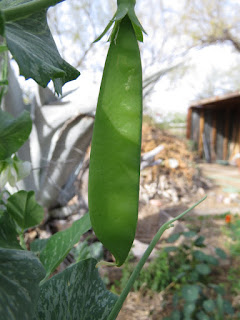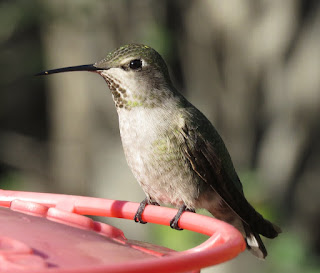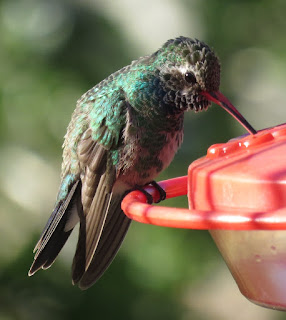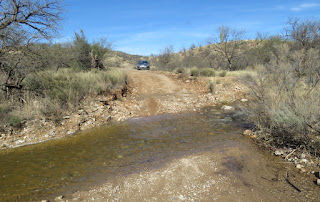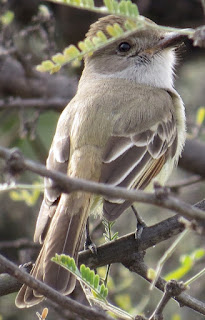As I’m about
to begin my short WINGS tour in Baja California Sur, it’s a good time to post
some photos from the yard with an update on my wonderful winter vegetable
garden here in Tucson. After the passage of two cold fronts in three days that
delivered about 3/4 of an inch of rain, we’ve had five nights of frost, the
lowest temperature being this past Thursday morning and yesterday at 26.6°F (-3°C). The nasturtiums, tomatoes, and
basil can’t handle those temperatures, so I put a frost cloth over the 93 square
feet of garden.
Amazingly,
the tomatoes made it, and this one seems to be very slowly growing four tomatoes. This
is a plant I first put in the garden last March, which limped along all summer,
not getting enough rain (too much competition from the mesquite tree), not
setting any fruit (too hot all summer), it and barely survived my transplanting in
early October (though it clearly liked the new soil and availability of
moisture). The other tomato is a volunteer seedling.
Some of the
nasturtiums look a little frost burned but their growing points survived. This
was the first flower, exactly 12 weeks after sowing.
This is mizuna,
or Japanese mustard greens.
Turnip Tokyo
Market
My favorite
for flavor, abundance, and the most lush growth of all my plants are the snow
peas, Oregon Sugar Pod. I’ve picked two bowls full already.
The
Broad-billed and Anna’s Hummingbirds regularly visit the flowers for nectar.
I have a few
other flowers growing and surviving the frost including marigolds and some snapdragons.
Lots of
things are volunteering too, some native plants, some weeds that I pull up (especially
Sisymbrium irio, London Rocket), and
some poppies that continue from a sowing I did in 1998. But I have no idea what
this volunteer is; it looks like no weed or plant that I’ve sown over the
years, so I’m letting it grow until I can see some identifiable flowers or
fruit.
There are
other things going on around the yard too. I’m not sure I’ve ever noticed moss
growing in our yard. I watered around some of the trees and shrubs a few times
in November and December, and since the end of last year we’ve been having some
decent amounts of rain, so that may be what has encouraged it.
I also
noticed patches of cryptobiotic soil, or biological soil crusts, a sign of a
very happy community of microorganisms. This is probably mostly a lichen, but
there may be some tiny bits of moss, algae, and cyanobacteria living in here
too.
The hummers
continue to be abundant, and I’m now keeping up 13 feeders. Anna's Hummingbird
is the most abundant, possibly as many as 30 or 40 in the yard over the course
of a full day. This is a female.
I may have
as many as 10 to 15 Broad-billed Hummingbirds, though at any one moment you can
see only about five. This is an immature male.
And for the
first time ever, I’ve had multiple Costa's Hummingbirds in the yard all winter.
The usual pattern has been for one to show up for a day or two every few weeks
– or one will stay at most for a week in late January. There are at least two
males (one immature without the long flanges of this adult), and two females
that are now present all the time, since at least October. This is a
region-wide pattern this year, with a record 83 being tallied on the Tucson
Valley CBC last month.
The female Costa’s
Hummingbird is often mistaken for female Anna’s or especially Black-chinned,
due to the very clean, pale appearance of the underside, especially the throat.
But we never get Black-chinned in the winter (at least not from November to
late February), and their voices are very different.






